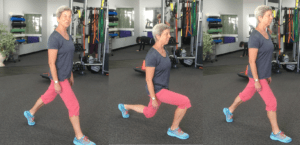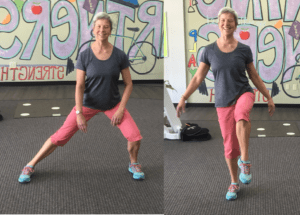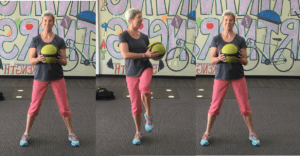Targeting specific muscles groups like the glutes or abdominals is a popular way to train for many people, but how often do you train balance? How many of us regularly seek out strategies for improving balance? As trainers, we try and incorporate balance training into each of our client’s workouts because we know how important it is. There have been numerous studies showing balance training reduces the risks of falls (especially in our seniors) and improves dynamic balance. Below are some basic exercises to get you started on your balance training.
Many, if not most of these exercises use the muscles of the hips and core to provide stability while providing you the benefit of strengthening the glutes and abs while working on your balance. Try adding one of the following exercises into the beginning of your workout at least 2x a week. You can check your progress using the single leg balance test. You should see some improvement in your balance in about 6 weeks.
SINGLE-LEG BALANCE TEST
- Grab a stopwatch and stand with your feet directly underneath the hips.
- Cross your arms over the chest.
- Lift one leg off the floor, making sure your legs do not touch each other.
- Start the timer the instant your foot leaves the floor. Stop the timer when your foot touches back down, or if your body starts flailing to regain balance. The test should be performed with minimal bodily movement.
- Record your score for each leg. The longer the time spent standing on one leg, the better your balance.
There are no norms for comparison, only your own score. The goal is to increase the time you are able to stand on one leg from pretest to post-test.
Note: It is up to you whether or not you wear shoes during this test. It makes sense that if you train in shoes, you should also test your balance wearing shoes. Clearly, this is not a scientific assessment, but making the pre-and post-tests factors the same, and the training variables the same as during testing (e.g., wearing shoes versus going barefoot), will give you a more realistic result.
SPLIT LUNGE
- Adopt a split-stance position with one leg in front of the other and your feet hip-width apart (i.e., your feet should be hip width apart and not directly in line with each other).
- Your front foot should be far enough forward so that the front shin remains vertical upon descent. Keep your front foot flat on the floor, while balancing on the ball of the back foot.
- Lower and raise your body by bending both knees and keeping your back heel off the floor. Go as low as you comfortably can without compromising balance.
- Perform 10 repetitions on each side.
For more challenge, try adding a small jump on the way up. Be very careful that the front knee stays in line with the toes and does not cave inward.
For less challenge, try holding the position (without raising or lowering) for 30 seconds on each side.
LATERAL LUNGE INTO SINGLE-LEG BALANCE
- Begin standing with your feet together.
- Take a long step out to the side, as if you are performing a side lunge. Quickly push off the floor and return to the standing. Perform again but this time instead of placing the foot beside the other one, raise your knee up toward the chest and hold for a count of 2. You are basically performing a quick side lunge and going into a single-leg balance without letting the foot touch the floor upon the return. Perform 10 repetitions on each side.
For more challenge, hold a dumbbell in the same-side hand as the lunge leg.
For less challenge, return the lunge foot to the starting position beside the other foot, instead of lifting the knee.
STANDING CROSS-BODY ROTATION
- To start, stand in a wide squat. Pull one knee up toward the opposite shoulder, while driving the opposite elbow to the outside of the knee, essentially performing an axe chop across-the-body with opposing limbs in a single-leg stance. Keep your torso as vertical as possible as you rotate through the trunk. Perform 10 repetitions on each side.
For more challenge, hold a dumbbell or small medicine ball with both hands. Lift the weight up on a diagonal and then drive the weight to the outside of the knee that is lifted.
For less challenge, bring the foot in to tap the floor beside the other foot, instead of lifting the knee.
“As noted earlier, perform your balance work early in your exercise session. This will help you avoid the risk of neuromuscular fatigue, which could occur if you wait until the end of your workout. Interestingly, available research shows that a multicomponent exercise program that consists of strength, endurance and balance training appears to be the best strategy for improving balance (Cadore et al., 2013; Zech et al., 2010). Hence, for the most benefit, balance exercises should be included as part of a comprehensive training program.”
ACE Health eTips – 1/2016




